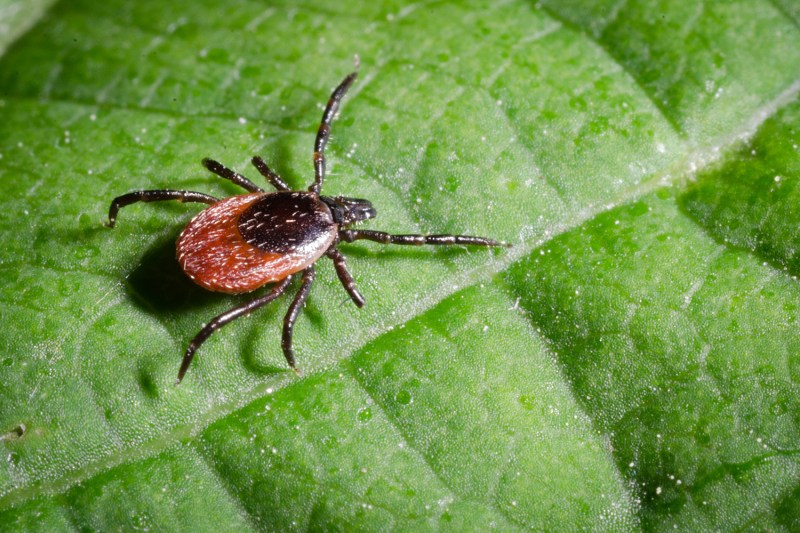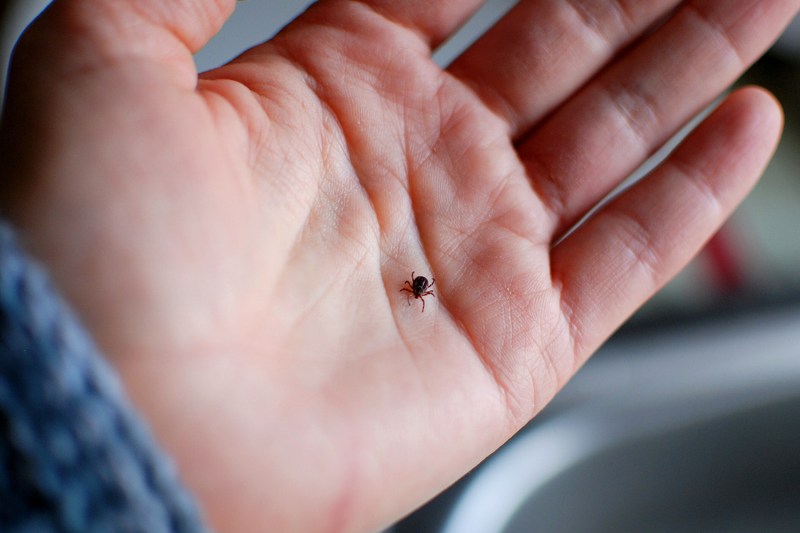For even avid outdoorsmen, dangerous wildlife encounters are exceedingly rare. Most apex predators from bears to sharks to mountain lions tend to keep to themselves. It’s the smaller critters that are often of most concern. That includes everything from ants to spiders to ticks. Bites from the last of these are among the most common. Unfortunately, they also have the highest potential for health risks and even death from complications. Here’s a step-by-step guide for avoiding and safely removing ticks.
How to Avoid Getting a Tick Bite
If you’ve spent any significant time outdoors, knowing how to avoid ticks and tick bites is probably second nature. The most obvious way to avoid an encounter is to stay away from areas where they’re likely to be hiding. Tall grass, dense brush, and fallen logs and branches are all prime grounds for ticks. Wear light-colored clothing and tuck pant legs into socks when heading out on a hike or in any of these areas.

The most proactive way to avoid ticks is to repel them by wearing bug repellent on your skin. If you prefer the all-natural route, lemon eucalyptus oil is the most proven and effective chemical-free option. Nothing works better, however, than DEET. Wearing a chemical repellent that’s at least 80% DEET— something like Sawyer Jungle Juice 100 is best — is almost guaranteed to keep mosquitoes, leeches, chiggers, in-laws, dogs, babies, and ticks away. If you spend significant time outdoors, consider doubling up on the repellent by treating clothing with a spray-on permethrin treatment.
Once inside, double-check clothing, pets, gear, and backpacks closely for ticks. Even the largest adult ticks are quite small, only about the size of a pencil eraser. They’re capable of hiding anywhere on the human body, including the hairline, in and around ears, between legs, under the arms, and even inside belly buttons.
How to Remove a Tick
The good news is that if you find a tick wandering freely on you or your clothing, there’s a good chance that it hasn’t yet bitten you. Contrary to popular belief, using a match to burn a tick off or painting it with nail polish remover are less than ideal ways to deal with a bite.
Conventional wisdom has long held that a great way to remove a tick is with a good ol’ fashioned pair of tweezers. Even the CDC still touts this method. It technically works to remove the tick, but it also increases the likelihood of the tick’s innards — including any potentially harmful bacteria and other nasties — being squeezed right into your bloodstream. If this is the only method at your disposal, be sure to use pointy tweezers, slide them between your skin and the tick’s mouth, and pull straight up and away from your skin. Some specialty products like the Tick Nipper and the Tick Key can also work well.

Another option for removing and killing adult ticks is to use an over-the-counter spray containing ether. At most pharmacies in the United States, these can be found in the form of Wart-Off or Compound W Nitrofreeze. Most of these include an all-in-one applicator with a nozzle that can be placed directly over the tick. Pump or spray the product normally as you would to treat a wart or skin tag. Wait approximately ten minutes as the tick slowly freezes and dies, then brush it off. For younger ticks in the larval or nymph phase, use a cream containing permethrin, something like Eurax or Crotan that’s commonly used for treating scabies. Apply a generous layer of cream over the baby ticks, wait a few minutes for them to die, then wipe off with a paper towel.
After the Tick Bite
Dead or alive, ticks can be tested for disease. It might seem overly cautious at the time, but consider placing the tick in a sealed bag in the freezer. If you develop symptoms of Lyme disease or anything else in the following days or weeks, have the tick tested. Cutter provides an over-the-counter Lyme Disease DNA testing kit that provides rapid results. In the days following a bite, be wary of anything out of the ordinary — rashes, fever, or joint ache — and seek medical treatment if symptoms develop.



